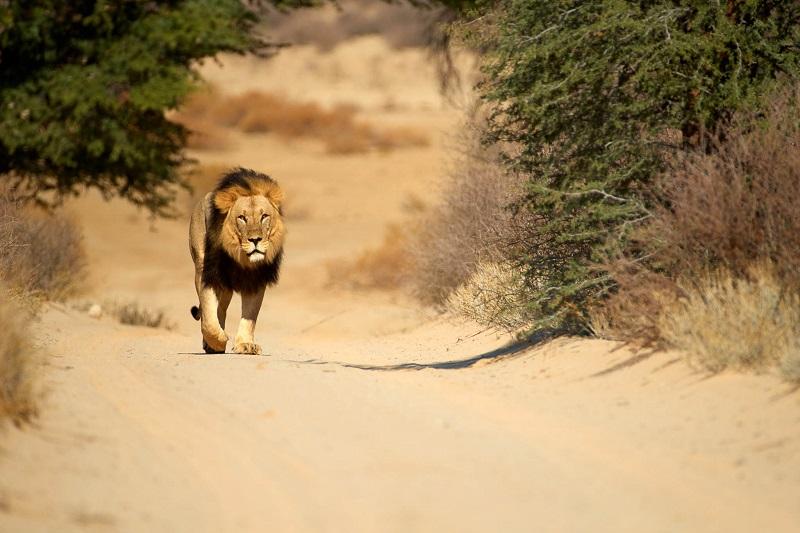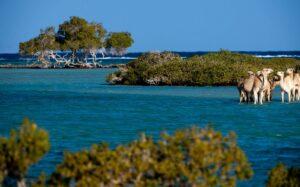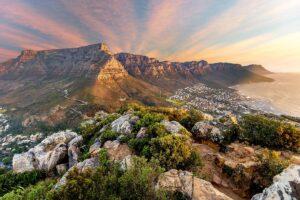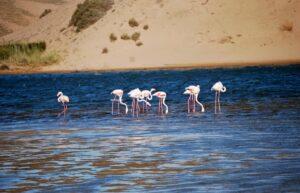Kgalagadi Transfrontier Park is one of the most unique and captivating parks in Southern Africa. Stretching across both South Africa and Botswana, this expansive park covers over 38,000 square kilometers, making it one of the largest protected areas in the world.
Its name, “Kgalagadi,” translates to “place of thirst,” reflecting the arid, semi-desert environment of the Kalahari region where it is located. The park is famous for its red sand dunes, vast landscapes, and unique wildlife adapted to the harsh desert conditions.
With dramatic scenery and a sense of untouched wilderness, Kgalagadi is a haven for photographers, wildlife enthusiasts and those seeking a truly remote safari experience. The park is particularly renowned for its large predators, especially the famous Kalahari black-maned lions, and offers exceptional game viewing opportunities.
Please Download Our Mobile App here.
Overview of Kgalagadi National Park
Kgalagadi Trans frontier Park is a pioneering example of cross-border conservation, with no fences between South Africa and Botswana. This allows wildlife to roam freely between the two countries. The park features two main rivers, the Nossob and Auob, which are typically dry except after rare heavy rains.
These riverbeds serve as crucial lifelines for the park’s wildlife, particularly during the dry season when water is scarce. The terrain consists of red dunes, thorny bushes and dry riverbeds, creating a stark but striking landscape that contrasts sharply with other African parks. The park is known for its semi-arid to arid climate, with hot summers and cooler winters.
Despite its harsh environment, Kgalagadi is home to a wide variety of wildlife, including large herbivores like springbok, gemsbok and wildebeest, which are often seen in large numbers. These herbivores, in turn, attract predators, making the park a hotspot for predator sightings, including lions, leopards, cheetahs and hyenas.
Wildlife in Kgalagadi National Park
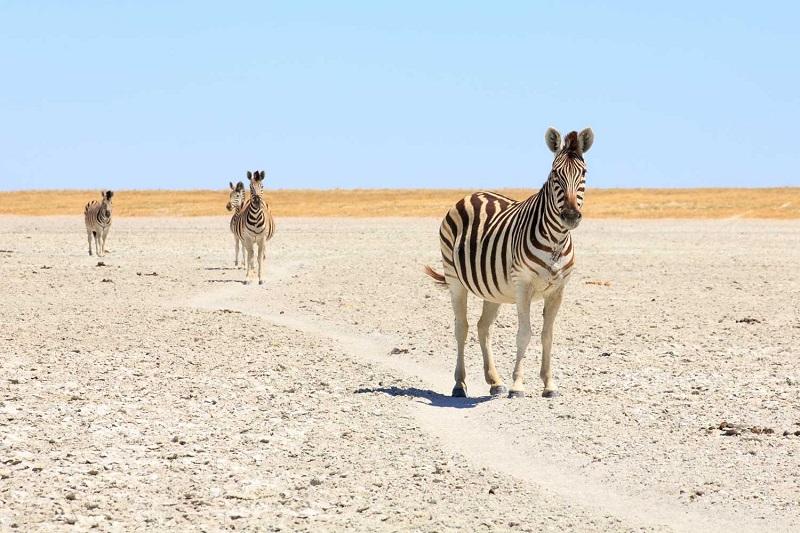
Kgalagadi National Park offers a unique wildlife viewing experience, with species that are specifically adapted to the harsh desert environment. One of the park’s most iconic residents is the Kalahari black-maned lion, a strikingly majestic predator known for its distinctive dark mane. These lions are larger and more powerful than those found in other parts of Africa, and they are often seen hunting the park’s herbivores, such as gemsbok and springbok.
Leopards and cheetahs are also frequently spotted in the park, particularly in the Nossob and Auob riverbeds, where they take advantage of the cover provided by the trees and bushes. The park is one of the best places in Southern Africa to observe cheetahs in action, as they sprint across the open plains in pursuit of their prey. Hyenas, both spotted and brown, are common scavengers, often following the big cats to feed on leftovers from their kills.
Kgalagadi is also home to an impressive array of smaller predators, including jackals, caracals, and African wildcats. Birdlife is abundant, with over 300 species recorded, making it a paradise for birdwatchers. Raptors, such as eagles, hawks, and vultures, are particularly prevalent, taking advantage of the open skies and high vantage points offered by the sparse vegetation.
Best Time to Visit Kgalagadi National Park
The best time to visit Kgalagadi National Park depends on what you are looking to experience. For the best wildlife viewing, especially of predators, the dry season from May to September is ideal. During this time, animals are more concentrated around the remaining water sources, making them easier to spot. The cooler winter months also make for more comfortable daytime temperatures, although it can get quite cold at night.
The summer months from October to April bring high temperatures, sometimes exceeding 40°C, but this is also the time when the park’s landscape transforms after the rains. The normally dry riverbeds may flow, and the vegetation becomes greener, offering a different kind of beauty. Birdwatchers will find the summer months particularly rewarding, as migratory species arrive, adding to the already rich birdlife of the park.
Getting to Kgalagadi National Park
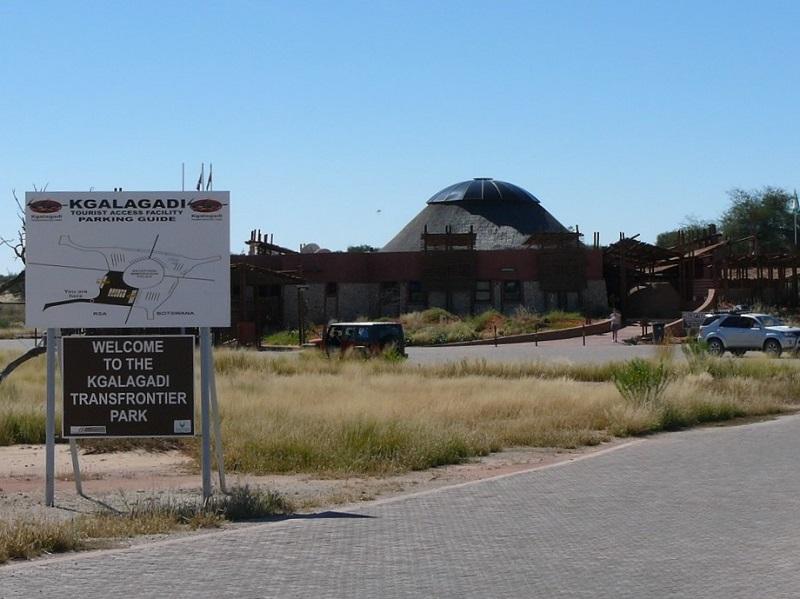
Kgalagadi National Park is accessible from both South Africa and Botswana, making it a convenient destination for travelers from either country. From Johannesburg, South Africa, the park’s main gate at Twee Rivieren is around 1,000 kilometers away and the drive takes around 10 to 12 hours. Many visitors choose to fly into Upington, which is about 250 kilometers from the park, and then drive the remaining distance.
From Botswana, the park can be accessed through the Mabuasehube Gate. However, this route is more suited for experienced travelers with 4×4 vehicles, as the roads can be rough and challenging. The park’s interior is best navigated with a 4×4, particularly if you plan to explore the Botswana side of the park.
Other Activities in Kgalagadi National Park
In addition to traditional game drives, Kgalagadi National Park offers several other unique activities. One of the most popular is photography, particularly due to the park’s dramatic landscapes and excellent predator sightings. The red sand dunes and wide-open spaces provide the perfect backdrop for stunning wildlife and landscape shots, particularly during the golden hours of sunrise and sunset.
Guided walks are another way to explore the park, offering a more intimate experience with nature. These walks are led by knowledgeable guides who provide insights into the park’s flora, fauna, and the survival strategies of animals in this harsh environment.
Camping is also a popular activity, with several campsites available inside the park. Staying overnight allows visitors to experience the park’s incredible night skies, which are some of the clearest and most star-filled in Africa due to the lack of light pollution.
Park Fees for Kgalagadi National Park
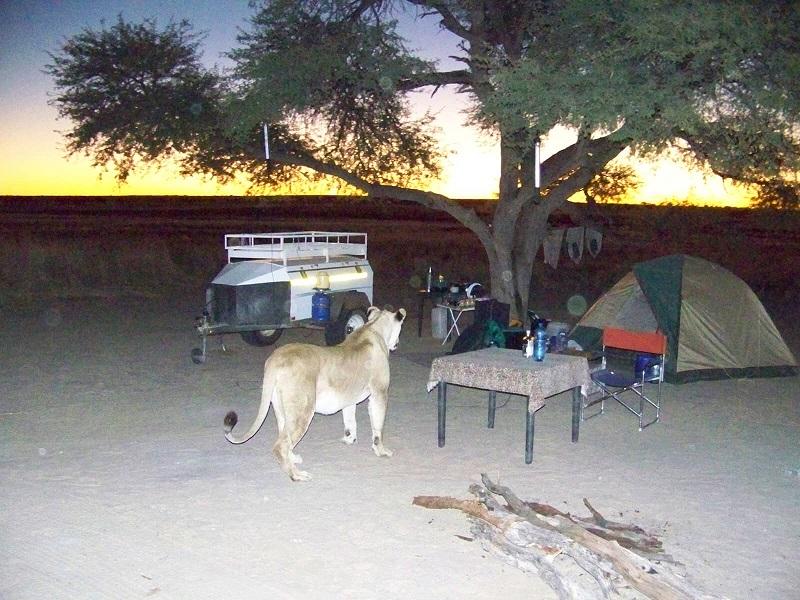
As of 2024, the park fees for Kgalagadi National Park are as follows:
- South African Residents (Adults): R100 per person per day
- South African Residents (Children): R50 per person per day
- Foreign Visitors (Adults): $25 per person per day
- Foreign Visitors (Children): $12 per person per day
There are additional costs for camping and guided activities, which vary depending on the location and level of service.
FAQs: Touring Kgalagadi National Park
Do I Need a Car to Tour the Park?
Yes, you will need a car to tour Kgalagadi, as the park is vast and self-drive safaris are the main way to explore it. A 4×4 vehicle is recommended, especially if you plan to travel deeper into the park or cross into the Botswana side.
Are Unguided Walks Allowed in the Park?
No, unguided walks are not allowed in Kgalagadi for safety reasons. However, guided walks with experienced rangers can be arranged through the park’s camps.
How Much is a Game Drive in the Park?
Game drives typically range between $50 to $100 per person, depending on whether they are offered by private lodges or the park’s main camps.
Conclusion
Kgalagadi National Park offers a truly unique safari experience with its stunning desert landscapes, impressive predator sightings and sense of remote wilderness. Whether you’re an avid photographer, wildlife enthusiast or simply seeking an off-the-beaten-path adventure, Kgalagadi promises a safari experience unlike any other.
